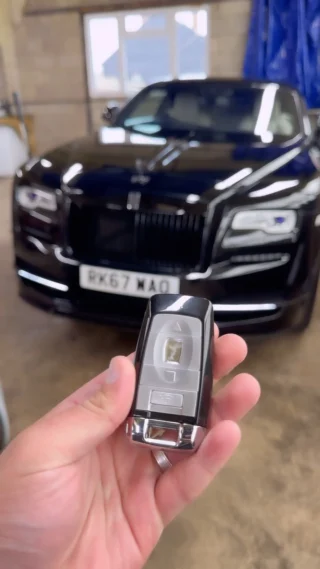20 Trailblazers Setting The Standard In Door Lock Repair
Comprehensive Guide to Car Door Lock Repair: Troubleshooting and Solutions
The integrity and performance of a vehicle's door locks are vital for both the security of the car and the safety of its residents. Car door locks can experience a variety of issues, varying from minor mechanical glitches to finish failures. This article looks for to provide an informative summary of car door lock repair, detailing common issues, diagnostic procedures, and solutions.
Understanding Car Door Locks
Before delving into repair procedures, it is important to understand the parts of a typical car door lock. There are 2 main kinds of locks: mechanical and electronic.
Components of a Car Door Lock System
- Lock Cylinder: The part where the key is inserted.
- Latches: Mechanisms that hold the door shut.
- Actuator: Electric motor in electronic locks that helps in locking and opening.
- Linkage: Connects the lock cylinder to the lock.
- Remote Key Fob: In electronic systems, this is used to lock and unlock the doors from a range.
Common Issues with Car Door Locks
Car door locks can stop working for a multitude of reasons. Here are some typical problems experienced by vehicle owners:
- Sticking or Frozen Locks: Especially in cold weather, locks can end up being hard to run.
- Lock Not Engaging or Disengaging: Both mechanical and electronic locks can deal with concerns where they do not react to the key or remote.
- Key Jams: The key may get stuck in the lock, making it impossible to lock or unlock the door.
- Remote Malfunction: In electronic systems, the key fob may not work due to battery issues or programming issues.
- Physical Damage: Vandalism or accidents can harm the lock mechanism.
Troubleshooting Car Door Lock Issues
When a car door lock is not working correctly, it is essential to diagnose the problem accurately before continuing with a repair. Below are steps that can help fix the issue:
Step-by-Step Troubleshooting
Visual Inspection:
- Check the door lock and surrounding parts for visible damage.
- Take a look at the key for wear and tear.
Check the Key:
- If the lock is sticking or not engaging, try utilizing a spare key if available.
- Make sure the key is clean from dirt and particles.
Examine the Actuator:
- Listen for any noises when pushing the key fob. remote key repair might show a malfunctioning actuator.
Examine Door Wiring:
- Check the circuitry that links the door lock to the vehicle's electrical system.
- Search for detached or frayed wires.
Temperature Influence:
- If the lock is sticking in winter, apply lithium grease to assist oil the mechanism.
Fixing Common Door Lock Issues
As soon as the issue has actually been identified, the repair can start. Here are some common repair methods for various concerns:
Fixing a Sticking or Frozen Lock
- Cleaning up: Use a graphite lubricant or silicone spray to tidy and lubricate the system.
- Heating: If frozen, utilize a hairdryer to warm the location around the locking system carefully, preventing overheating.
Fixing a Lock Not Engaging/Disengaging
Lock Cylinder Replacement:
- If the lock cylinder is used, consider changing it. This frequently involves spying off the door panel to access the lock mechanism.
Actuator Replacement:
- For electronic locks, if the actuator is malfunctioning, it will need replacement. Make duplicate car keys to detach the battery before trying this repair.
Fixing a Jammed Key
- Extraction Tool: If a key is stuck, use a pair of needle-nose pliers to gently pull it out, or a key extractor.
- Lock Lubrication: Apply a percentage of lubricant to alleviate the procedure.
Remote Key Fob Malfunction
- Battery Replacement: Most remotes have replaceable batteries. Follow the producer's directions to replace the battery.
- Reprogramming: Sometimes, the remote requirements to be reprogrammed. Refer to the vehicle's manual for steps to reprogram the key fob.
Physical Damage Repairs
- Door Lock Assembly Replacement: If the lock is physically harmed, complete replacement of the lock assembly might be essential.
- Expert Help: If not sure about DIY repairs, seek support from a qualified mechanic.
Upkeep Tips for Car Door Locks
To extend the life of car door locks, regular maintenance is necessary. The following practices can assist preserve ideal efficiency:
- Regular Lubrication: Apply appropriate lubricant to the locks every couple of months.
- Keep Keys Clean: Regularly clean the car keys to prevent dirt accumulation.
- Prevent Excessive Force: Do not utilize excessive force when locking or unlocking; this can trigger damage over time.
- Watch for Signs of Wear: Be mindful to any modifications in the lock's performance and address problems quickly.
Frequently Asked Questions about Car Door Lock Repair
Q: How can I inform if my door lock is broken?A: Common
indications include the lock not engaging or disengaging, a jammed key, sounds from the door when utilizing the key fob, or visible damage to the lock assembly.
**Q: Can I repair a car door lock myself?A: Yes, lots of simple concerns can be resolved by following the repairing steps in this post, but complex problems may need expert help. Q: What type of lube ought to I utilize
**for my locks?A: It is best to use graphite powder or silicone-based lubes since oil can attract dirt and gunk. Q: How much does it usually cost to change a car door lock?A: The cost can differ widely
based on the vehicle's make and design, but common replacement costs
can range from ₤ 100 to ₤ 300, consisting of labor. Car door lock repair can seem complicated, but understanding the elements and typical issues can make the procedure much more workable. Whether dealing with small repairs yourself or seeking expert help for more significant concerns, keeping the door locks working effectively is necessary for vehicle security and safety. Routine upkeep and timely attention to issues can substantially extend the life of your car's locking system.  ****
****